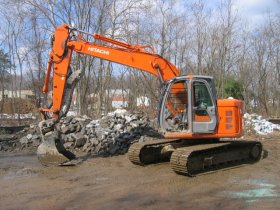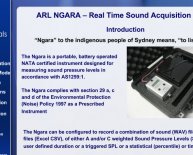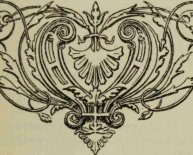
Environmental Protection Noise Regulations

Montgomery County Noise Control Ordinance
The Montgomery County Noise Control Ordinance is
Download a PDF of the Noise Control Ordinance (56KB)
31B-l. Declaration of policy
(a) The County Council finds that excessive noise harms public health and welfare and impairs enjoyment of property. The intent of this Chapter is to control noise sources to protect public health and welfare and to allow the peaceful enjoyment of property. This Chapter must be liberally construed to carry out this intent.
(b) The Department of Environmental Protection administers this Chapter.
(1) The Department must coordinate noise abatement programs of all County agencies, municipalities, and regional agencies.
(2) A County agency, municipality in which this Chapter applies, or regional authority subject to County law must not adopt a standard or regulation that is less stringent than this Chapter or any regulation adopted under this Chapter.
(3) The Director may form an Interagency Coordinating Committee to assist the Director in coordinating noise control policy. If the Director forms the committee, the Director must designate an individual to chair the committee. The members of the committee should be designated by County, local, and regional agencies that the Director invites to participate.
(4) The Department must establish procedures to identify and reduce noise sources when the County plans and issues permits, variances, exemptions, or approvals.
(5) The Department should make recommendations to the County Executive, County Council, and Planning Board regarding noise control policy, regulations, enforcement, and noise sensitive areas.
31B-2. Definitions.
In this Chapter, the following words and phrases have the following meanings:
(a) Construction means temporary activities directly associated with site preparation, assembly, erection, repair, alteration, or demolition of structures or roadways.
(b) dBA means decibels of sound, as determined by the A-weighting network of a sound level meter or by calculation from octave band or one-third octave band data.
(c) Daytime means the hours from 7 a.m. to 9 p.m. on weekdays and 9 a.m. to 9 p.m. on weekends and holidays.
(d) Decibel means a unit of measure equal to 10 times the logarithm to the base 10 of the ratio of a particular sound pressure squared to the standard reference pressure squared. For this Chapter, the standard reference pressure is 20 micropascals.
(e) Department means the Department of Environmental Protection.
(f) Director means the Director of the Department of Environmental Protection or the Director's authorized designee.
(g) Enforcement officer means:
(1) for a noise originating from any source:
(A) an employee or agent of the Department designated by the Director to enforce this Chapter;
(B) a police officer; or
(C) a person authorized under Section 31B-12(a) to enforce this Chapter;
(D) a person authorized by a municipality to enforce this Chapter; or
(2) for a noise originating from an animal source, the Director of the Division of Animal Control and Humane Treatment in the Police Department or the Director's authorized designee.
(h) Impulsive noise means short bursts of a acoustical energy, measured at a receiving property line, characterized by a rapid rise to a maximum pressure followed by a somewhat slower decay, having a duration not greater than one second and a field crest factor of 10 dBA or more. Impulsive noise may include, for example, noise from weapons fire, pile drivers, or punch presses.
(i) Leaf blower means any portable device designed or intended to blow, vacuum, or move leaves or any other type of unattached debris or material by generating a concentrated stream of air. Leaf lower includes devices or machines that accept vacuum attachments.
(j) Nighttime means the hours from 9 p.m. to 7 a.m. weekdays and 9 p.m. to 9 a.m. weekends and holidays.
(k) Noise means sound, created or controlled by human activity, from one or more sources, heard by an individual.
(l) Noise area means a residential or non-residential noise area:
(1) Residential noise area means land in a zone established under Section 59-C-1.1, Section 59-C-2.1, Division 59-C-3, Section 59-C-6.1, Section 59-C-7.0, Section 59-C-8.1, Section 59-C-9.1 for which the owner has not transferred the development rights, or Section 59-C-10.1, or land within similar zones established in the future or by a political subdivision where Chapter 59 does not apply.
(2) Non-residential noise area means land within a zone established under Section 59-C-4.1, Section 59-C-5.1, Section 59-C-9.1 for which the owner has transferred the development rights, or Division 59-C-12, or land in similar zones established in the future or by a political subdivision where Chapter 59 does not apply.
(m) Noise disturbance means any noise that is:
(1) unpleasant, annoying, offensive, loud, or obnoxious;
(2) unusual for the time of day or location where it is produced or heard; or
(3) detrimental to the health, comfort, or safety of any individual or to the reasonable enjoyment of property or the lawful conduct of business because of the loudness, duration, or character of the noise.
(n) Noise sensitive area means land designated by the County Executive as a noise sensitive area under Section 31B-8.
(o) Noise-suppression plan means a written plan to use the most effective noise-suppression equipment, materials, and methods appropriate and reasonably available for a particular type of construction.
(p) Person means an individual, group of individuals, corporation, firm, partnership, or voluntary association; or a department, bureau, agency, or instrument of the County or any municipality, or of any other government to the extent allowed by law.
(q) Prominent discrete tone means a sound, often perceived as a whine or hum, that can be heard distinctly as a single pitch or a set of pitches. A prominent discrete tone exists if the one-third octave band sound pressure level in the band with the tone exceeds the arithmetic average of the sound pressure levels of the 2 contiguous one-third octave bands by:
(1) 5 dB for center frequencies of 500 Hz and above;
(2) 8 dB for center frequencies between 160 and 400 Hz; or (3) 15 dB for center frequencies less than or equal to 125 Hz.
(r) Receiving property means any real property where people live or work and where noise is heard, including an apartment, condominium unit, or cooperative building unit.
(s) Sound means an auditory sensation evoked by the oscillation of air pressure.
(t) Source means any person, installation, device, or animal causing or contributing to noise.
31B-3. Regulations.
The County Executive may establish noise control regulations and standards as necessary to accomplish the purposes and intent of this Chapter. Any regulation must be at least as stringent as this Chapter. The Executive by regulation may set fees that are sufficient to offset the costs of Department reviews or other actions required or authorized by this Chapter.
31B-4. Noise Control Advisory Board.
(a) A Noise Control Advisory Board must advise the County Executive, Director, County Council, and Planning Board on noise control issues, including administration and enforcement of this Chapter.




















